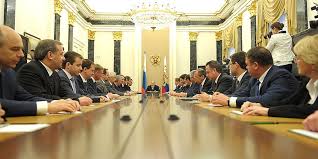One way to improve the impact of your scientific research is to engage with policy. Doing so can create new opportunities for yourself and your research. The main challenges are knowing when and how to effectively communicate scientific results to policy. However, we will be discussing these terms: policy making, the process, definition, system, institutions, and cycle.
What Is Policy Making?
A policy is a statement of intent and is in completion as a procedure or protocol. Thus it is a deliberate system of principles to guide decisions and achieve rational outcomes. However, it can also refer to the process of making important organizational decisions, including the identification of different alternatives such as programs or spending priorities, and choosing among them on the basis of the impact they will have.
However, policy making is the activity of deciding on new policies, especially by a government or political party. In policy making there are types of policies which can be:
- Regulatory Policies: they are plans specifying conditions and constraints for individual or collective behavior. For example, Environmental protection; migration policy; consumer protection.
- Redistributive Policies: these are policies modifying the distribution of existing resources. for example, Land reform; progressive taxation; welfare policy in more general terms.
- Distributive Policies: these are policies distributing new resources. For example, Agriculture; social issues; public works; subsidies; taxes.
Policy Making Process
This includes the legislative process, which can be quite complex, with various stages for formulating, drafting legislation, consultation, and the passage of laws through committees and governmental systems. These policy making process affect timing and opportunities for input and influence. A policy established and carried out by the government goes through several stages from inception to conclusion. These are agenda building, formulation, adoption, implementation, evaluation, and termination.
#1. Agenda Building
Before a policy can be in creation, a problem must exist that is calling to the attention of the government. For example, is a crime. American society tolerates a certain level of crime; however, when crime rises dramatically or is in the notice to be rising dramatically, it becomes an issue for policymakers to address. Specific events can place a problem on the agenda. The flooding of a town near a river raises the question of whether homes should be approved to be built in a floodplain?
#2. Formulation And Adoption
Policy formulation means coming up with an approach to solving a problem. Congress, the executive branch, the courts, and interest groups may be involved. Different proposals are often on offer. Thus, the president may have one approach to immigration reform, and the opposition-party members of Congress may have another. The formulation has a tangible outcome: A bill goes before Congress or a regulatory agency drafts proposed rules. Therefore, the process continues with adoption. A policy is adopted when Congress passes legislation, the regulations become final, or the Supreme Court renders a decision in a case.
#3. Implementation
The implementation or carrying out of policy is most often accomplished by institutions other than those that formulated and adopted it. A statute usually provides just a broad outline of a policy. For example, Congress may mandate improved water quality standards, but the Environmental Protection Agency (EPA) provides the details on those standards and the procedures for measuring compliance through regulations.
As noted earlier, the Supreme Court has no mechanism to enforce its decisions; other branches of government must implement its determinations. Thus, successful implementation depends on the complexity of the policy, coordination between those putting the policy into effect, and compliance. The Supreme Court’s decision in Brown v. Board of Education is a good example. The justices, however, realized that desegregation was a complex issue; however, they did not provide any guidance on how to implement it “with all deliberate speed.” Here, implementation depended upon the scrutiny of circuit and appeals court judges and local and state school board members who were often reluctant to push social change.
#4. Evaluation and Termination
Evaluation means determining how well a policy is working, and also it is not an easy task. Therefore, people inside and outside of government typically use cost-benefit analysis to try to find the answer. Thus, cost-benefit analysis is based on hard-to-come-by data that are subject to different, and sometimes contradictory, interpretations.
Policy Making Definition
In definition, it is the process of formulating policies, especially in politics. they are designed to achieve defined goals and present solutions to societal problems; yet in their definition, they can be conceived of as the main output of political systems. Although, policies in the definition are government statements of what it intends to do or not to do, including law, regulation, ruling, decision, or order.
But how are these policies actually made? on the other hand, the definition of policy making can also be defined as a more specific term, which refers to a long series of actions carried out to solve societal problems
What Is The Policy Making System?
Different countries have yet different legislative systems, which will also impact their administrative system. There are also different legal systems which are: civil law, common law, and religious law. There is sometimes also a written constitution for the country, which is not legislation but provides guiding principles for the country.
The process by which order comes into being and evolves over time. Also, people’s interests, problems, and concerns create political issues for government policymakers. Therefore, these issues shape the system, which in turn impacts people, generating more interest, problems, and concerns. Some countries are also part of a larger policy-making system, which can involve making with a number of countries such as the Southern African Development Community (SADC), the African Union, or the Association of Southeast Asian Nations – ASEAN).
In considering the policy making system, the following areas should be considered in the making.
- Administrative and enforcement systems
- The legislative system
- Policymaking processes
- Agenda setting: including priority of issues
- Timings: including possible plan ‘windows’/opportunities and timing for input/influence.
- Role of research and input
- Role of pilot projects
- Relevant conferences/events
- Role and influence of service delivery
Now we are done with policy making system, let us now take a look at the institutions.
What Are The Policy Making Institutions?
The branches of government charged with taking action on political issues. The U.S. Constitution established three policymaking institutions- Congress, the presidency, and the courts. Today, the power of the authority is so great that most political scientists consider it a fourth policymaking institution.
- Parliamentary System
- Federalism
- Legislature
- Executive
- Cabinet
- Prime Minister and his Council of Ministers
- National Development Council (NDC), and Planning Commission and Secretariat
- Civil Servants/Bureaucrats – to assist the Cabinet in the discharge of its functions
- Secretariats – Departments and Ministries
- Judiciary
Hope we are clear on the different policy making institutions? let us go over to its cycle.
Policy Making Cycle
The policy cycle is an idealized process that explains how the order should be drafted, implemented, and assessed. It serves more as an instructive guide for those new to it than as a practical strictly defined process, but many organizations aim to complete these using the system cycle as an optimal model.
The policy cycle is made up of roughly six stages and science can be incorporated into every step. How science supports these different stages are described below.
What Is a Policy-Making Process?
These are the process of policy making:
- Agenda Building
- Formulating & Adoption
- Implementation
- Evaluation & Termination
What Is the Importance of Policy-Making?
Policies govern how an organization operates by providing direction, consistency, accountability, efficiency, and clarity. This provides cooperative members with guidelines and principles to follow.
What Are the Types of Policy?
There are types of policymaking, which are:
- Regulatory Policies:
- Redistributive Policies:
- Distributive Policies:
What Is an Example of Policy Making?
For example, a state can take away a bad driver’s license. Or, the government could give incentives, like tax breaks, to people who give money to the presidential campaign. They even use slogans like “Only you can stop forest fires” to get people to do the right thing.






